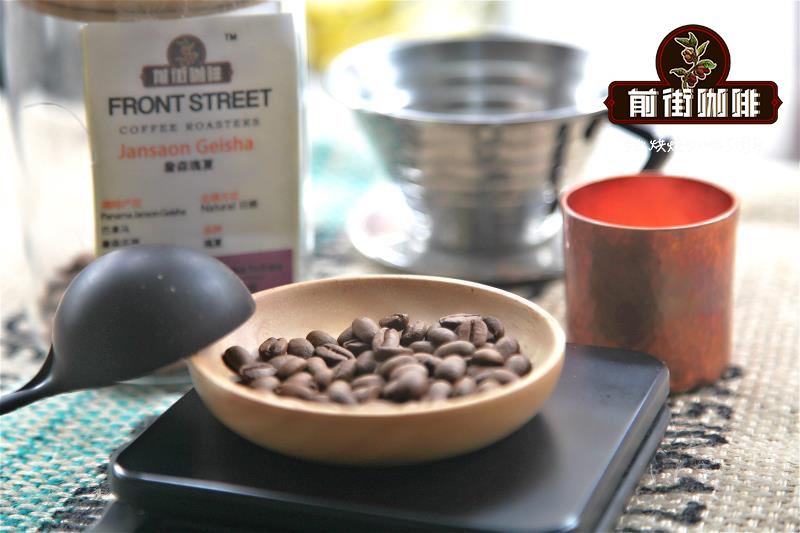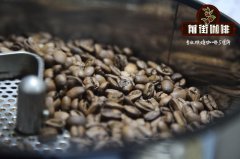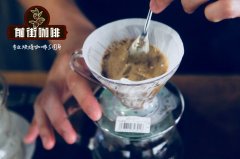How does Sumatra Lindong Manning coffee taste? how do you cook Sumatran coffee beans?

Professional coffee knowledge exchange more coffee bean information please follow the coffee workshop (Wechat official account cafe_style)
Sumatra is back in our coffee lineup! A few years back, we had a fine Mandheling which was so good, we could hardly let go of it. Subsequent crops didn't come near the excellence we came to expect, so we eventually dropped it altogether. Now, we have purchased a different, but equally intriguing new crop of Lintong from Sumatra.
Sumatran coffee has disappeared in our store for some time, mainly because we haven't met any better raw beans yet. The Sumatran coffee we met this time is the Lindong producing area.
Lintong, grown south west of Lake Toba in northern Sumatra, gets it unique characteristics from the terroir and from its wet-hulled processing method called Giling Basah in the local language. The coffee is mostly grown by small-holder farms without chemicals. Each farm removes the seeds from the cherries, ferments the beans overnight to loosen the mucilage, then washes and partially dries the beans under a wide variety of conditions. (Here's a link to more info on this unique process: https://legacy.sweetmarias.com/library/node/8756)
The Lindong producing area is located in the southwest of Lake Lake Toba in the north of Sumatra. The unique geographical environment and wet shell shelling treatment make coffee beans have unique taste characteristics. The Lindong producing area grows most of the small farms without the use of chemical fertilizers and pesticides, hand-selected for rapid fermentation, and then washed and dried. Video connection
Https://legacy.sweetmarias.com/library/node/8756)
This non-standardized initial processing can result in its peculiar flavor profile with low acidity, thick body and rustic flavors highly prized by fans of Sumatra coffee. As one reviewer said: "Sumatra may appeal to those who like minimally processed wine."
We think this particular crop will appeal to a wide variety of coffee lovers, whether as a regular "go-to" coffee, or an intriguing, occasional change from your standby favorite. It has hints of cocoa that spring at you with the first sip, but then melds with the overall nutty earthiness enveloped in a velvety body.
Lin Dong's taste is suitable for most coffee lovers, the first mouthful of cocoa, and then the nutty aftertaste, will make you love it!
Sumatran coffee is very rich in flavor, fragrant, bitter, mellow, with a little sweetness. As the Mantenin coffee beans themselves do not have sour characteristics, so the general special blending methods are based on Mantenin coffee beans, in the long-term heat preservation or preparation of iced coffee, there is no unpleasant sour taste. After baking, the beans are very large, and the raw beans are brown or dark green with a special aroma like caramel and a mellow taste.
Mantenin coffee brewing advice:
Filter cup: HarioV60
Degree of grinding: 4.5, small Fuji
Powder quantity and water quantity: 15g, 250ml
Steaming, warm water: 30g, 40s 92 ℃
Powder-to-water ratio, time: 1purl 16.7 2 minutes 30
As the medium-baked beans plus low-altitude beans, its cell wall is relatively thin, so it is not resistant to extraction, if the water is cut off too many times, it is tantamount to letting the coffee powder particles soak in the water all the time, which will lead to the astringent and miscellaneous taste of the coffee extract at the end.
Therefore, our medium-and deep-roasted Sumatran coffee, Brazil, will choose [high water temperature + one-size-fits-all] to brew.
END
Important Notice :
前街咖啡 FrontStreet Coffee has moved to new addredd:
FrontStreet Coffee Address: 315,Donghua East Road,GuangZhou
Tel:020 38364473
- Prev

Coffee bean flavor characteristics of Sumatra Tavar Star Coffee Story of Sumatra Gayo Coffee
Professional coffee knowledge exchange more coffee bean information please follow the coffee workshop (Wechat official account cafe_style) this batch of Sumatran coffee Tavar star is located in the north of Sumatra province (Aceh), the Cayo Mountains (Gayo) region, where residents, mostly to grow coffee. Located in high altitude and rainy areas, it is very suitable for growing coffee. Planting height
- Next

What are the Sumatran coffee producing areas? what are the characteristics of Sumatran coffee in different producing areas?
For more information on coffee beans, please follow the Coffee Workshop (official Wechat account cafe_style) in Sumatra Sumatra: the best coffee in Sumatra comes from two places: in Central Asia, north of Sumatra, near Lake Tawar and in the south, the mountains around Lake Toba. Because a lot of sharecroppers produce and make
Related
- Does Rose Summer choose Blue, Green or Red? Detailed explanation of Rose Summer Coffee plots and Classification in Panamanian Jade Manor
- What is the difference between the origin, producing area, processing plant, cooperative and manor of coffee beans?
- How fine does the espresso powder fit? how to grind the espresso?
- Sca coffee roasting degree color card coffee roasting degree 8 roasting color values what do you mean?
- The practice of lattes: how to make lattes at home
- Introduction to Indonesian Fine Coffee beans-- Java Coffee producing area of Indonesian Arabica Coffee
- How much will the flavor of light and medium roasted rose summer be expressed? What baking level is rose summer suitable for?
- Introduction to the characteristics of washing, sun-drying or wet-planing coffee commonly used in Mantenin, Indonesia
- Price characteristics of Arabica Coffee Bean Starbucks introduction to Manning Coffee Bean Taste producing area Variety Manor
- What is the authentic Yega flavor? What are the flavor characteristics of the really excellent Yejasuffi coffee beans?

